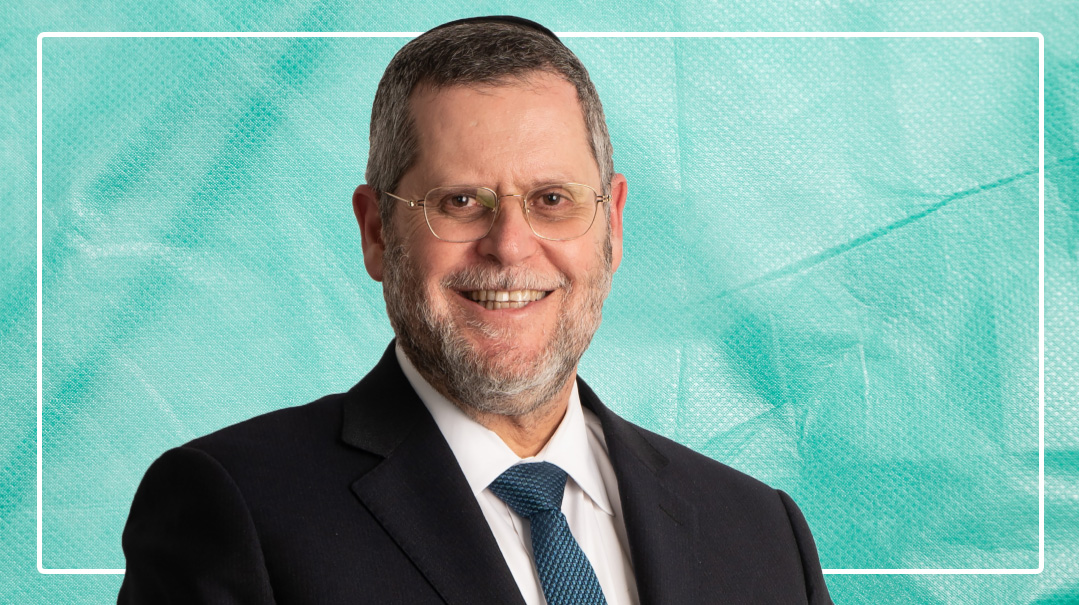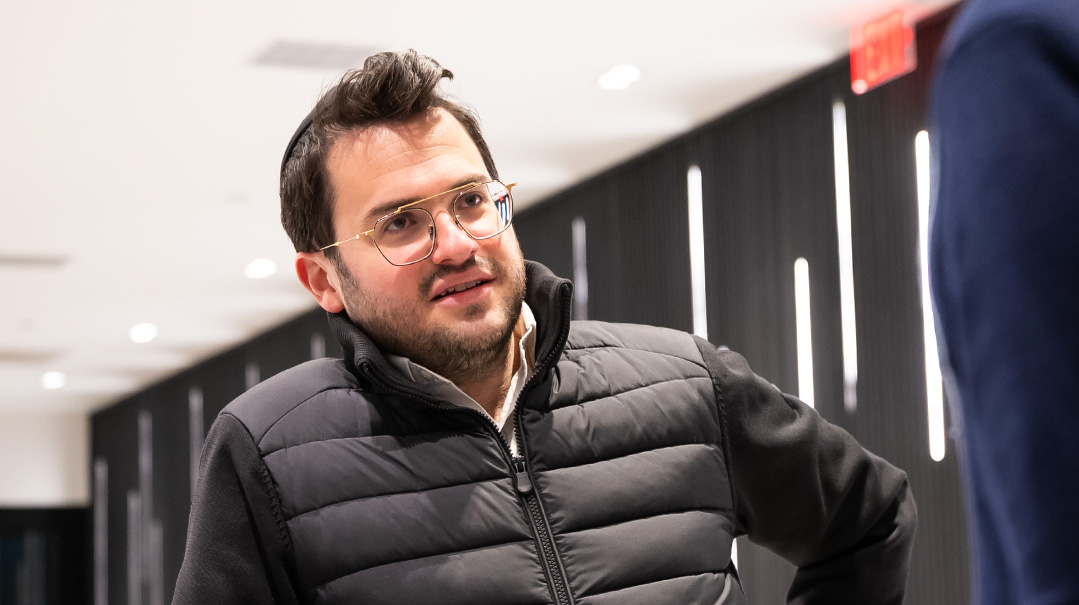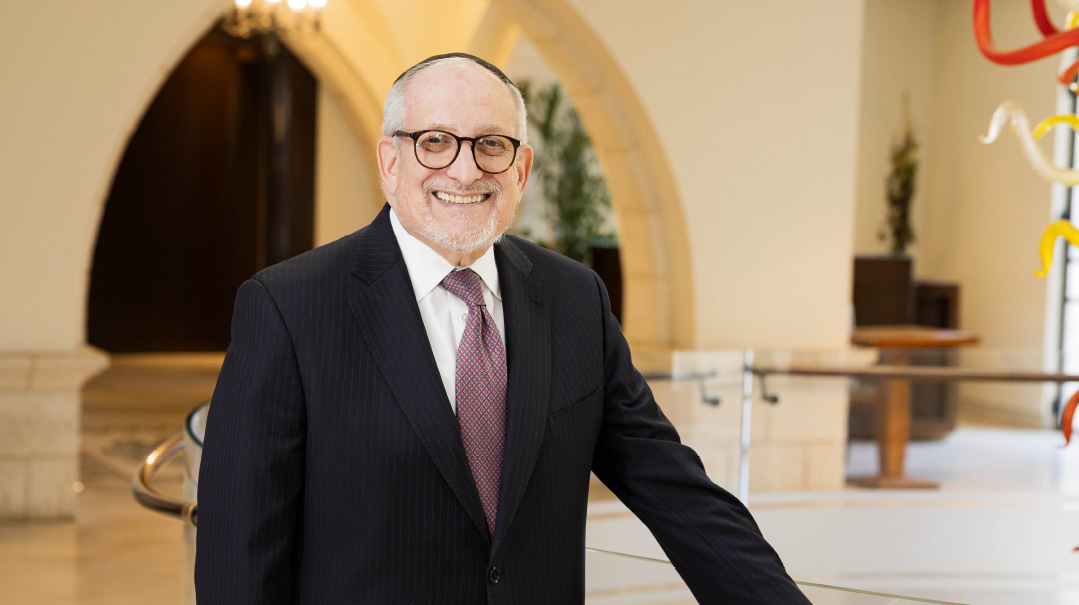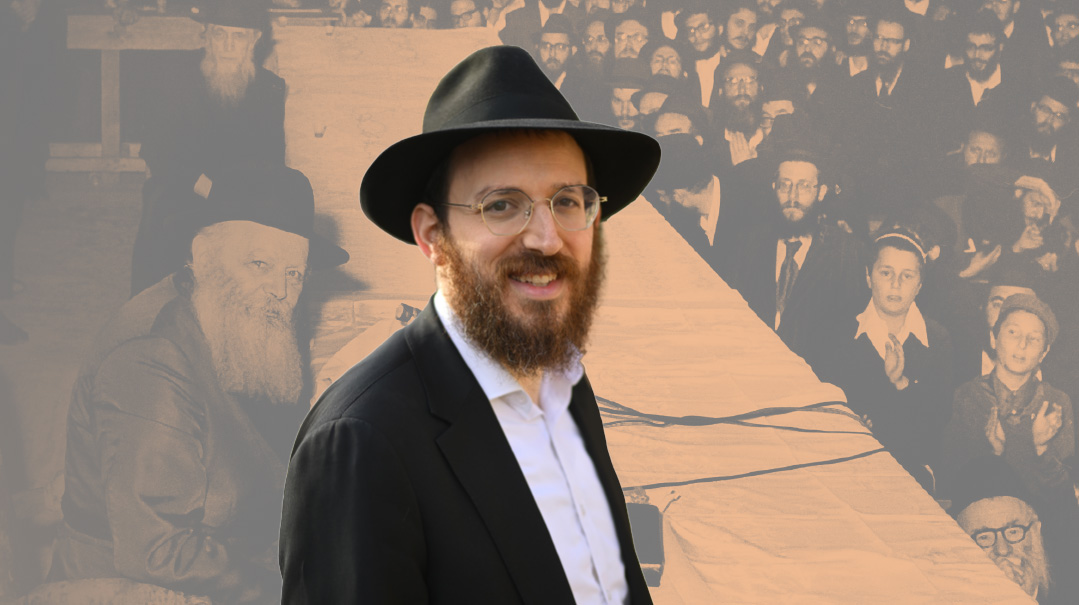The Best Medicine
| June 20, 2023Dr. Dovid Friedman transplanted global top practices to his Lakewood health center

Photos: Ruby Studios
Alecture entitled “Health Care on the Four Continents,” about the various health care systems in the United States, United Kingdom, South Africa and Israel, might not sound like the most exciting way to spend a morning. But for the medical students on the Lakewood Fellowship (a kiruv program that brings Jewish students from across the country to spend their summer breaks interning in various Lakewood industries), sitting around CHEMED’s conference room, it was a talk they’d been anticipating. They wanted to hear Dr. Dovid Friedman — CEO of CHEMED (Lakewood’s Center for Health Education, Medicine and Dentistry) and founder of the Medicine and Ethics conference that brings together Orthodox medical professionals for networking and collaboration — share his own story. For he’s practiced medicine in all four locations, and now he’s determined to leverage his global experiences to create a medical center of the future in Lakewood and beyond. Every medical encounter, he says, is something to learn from and move forward with.
Dr. Friedman, a native of South Africa, began his medical career there when the country was still governed by an official policy of apartheid, and that provided the backdrop for his earliest lessons in what it really means to be endowed with the responsibility of healing others. Today the “Rainbow Nation,” as it’s known for its diverse population of more than 59 million citizens, includes scores of exotic African tribes, each of them speaking its own language and practicing its own culture. Yet for all its diverse citizenry and multicultural populace, up until just 30 years ago, its citizens were divided up neatly into three status categories: “White,” “Colored (a mix of ethnicities),” and “Black.”
Prior to 1994, when political prisoners were released, freedom of association legalized, and a non-racial constitutional democracy established, racial segregation under the all-white government of South Africa dictated that non-white South Africans, the majority of the population, were required to live in separate areas from whites, use separate public facilities, receive separate (inferior) services, and have as little contact as possible. The clear demarcation of South African neighborhoods, beaches, buses, and schools was compounded by stark inequality (a park might have seven benches for whites and one for blacks, and if a black person sat on a whites-only bench, he’d be arrested).
Like all areas of life in South Africa, its health care system was segregated. South Africa’s white citizens were treated by highly skilled professionals in state-of-the-art facilities, while its citizens of color were relegated to squalid conditions. When Dr. Friedman graduated medical school in 1989 from the University of Witwatersrand, he opted to do his residency — the essential postgraduate training for medical students — in a black facility. Being in a black setting for several hours a day and interacting with that population was an unusual choice for someone of his background, and despite growing up in and attending educational institutions in an apartheid country, he didn’t fully appreciate the extent of the discrimination until his work with his black countrymen.
“It left a profound impact on me. It’s one thing to know conceptually what apartheid is, yet it’s quite another to live it daily,” he says. Dr. Friedman was assigned to Chris Hani Baragwanath Hospital — a mammoth facility with about 3,200 beds, reputed to be the largest in Africa and the third largest in the world (the two largest are in China).
Dr. Friedman would make the drive every day from the opulent white neighborhood with the manicured lawns to the hospital, and as he exited the white area, “it was as if I had entered something akin to a third world country,” he remembers. “As I got closer to the hospital, I would see burned-out cars at the end of road that were there as a result of the taxi fights between warring tribes. The casualties of those battles, always badly bruised and often exhibiting a wide range of injuries, were brought to Baragwanath, which looked like a perpetual war zone.”
As masses of patients arrived in the huge emergency ward, admission staff would divide them according to their need. “Acutely ill or injured patients got an actual bed, the less severe merited a chair next to the beds and the moderately ill patients weren’t given any place — they just wandered around until the evening, at which point some flimsy mattresses were passed around for anyone who couldn’t find a place for the night,” says Dr. Friedman.
He remembers one evening when the emergency room was sprayed by bullets. But the gunfire wasn’t the result of some tribesman whose quarrel had gone awry; the bullets ricocheting off the walls were being fired by South African police pursuing a suspect who’d run into the hospital.
Another time, a motor vehicle accident involving a white person occurred right outside the hospital, and the victim was brought into the emergency room. “The man was in critical condition, so we were allowed to stabilize him, but then we got a call from the government that we had to have him transferred within 24 hours to a whites-only hospital,” Dr. Friedman relates. “He was critically ill, and we explained that he would never survive the transport, so the government backed down. The next day they called again, demanding that the patient immediately be transported to a white hospital, yet even when the medical staff protested that the patient was still too ill, the government held its ground. ‘So he’ll die on the way,’ the official told the medical team. ‘Better that than to be treated at a black hospital.’”
Yet despite the unconscionable apartheid policies, the sheer number of injuries and diseases that he was tasked with treating — many unknown to the civilized world — gave him a unique opportunity to understand medicine and pathology on a level that simply would not have been possible had he been assigned to one of the country’s gleaming, well-funded, and adequately staffed hospitals for whites.
“The extent of the diseases and the huge array of pathology and advanced pathology that people came in with because of lack of general medical care was incredible,” recalls Dr. Friedman. “We got exposure to first and third world medicine as well as first and third world diseases.”
Aside from the hard medical knowledge that he gained, there was another trait Dr. Friedman picked up in those huge, terrifying wards: the value of communication. “In many instances, we were dealing with people from rural areas who had no exposure to modernity, and we had to convince them they were in a safe place,” he remembers. “There were so many languages and dialects being spoken that often we had to locate people from similar tribes to calm the patient down and explain what kind of treatment we would be giving. I learned back in that overcrowded hospital that unless people were explained health care in a way that made sense to them and in a way that they felt understood, it was hard for them to accept, and made it more difficult to achieve effective outcomes.”
That vital lesson in communication would prove itself pivotal many years down the line.
Now at the helm of a health care center that has staff trained in English, Hebrew, Yiddish, and Spanish, Dr. Friedman explains that translation is just the first step in communicating effectively, especially when cultural sensitivity is at stake.
“In many conversations with state agencies, I reiterate that just because you translate a document, it doesn’t make it culturally sensitive,” he says.
A recent advertising campaign by the New Jersey Department of Health promoting vaccines is a case in point. The DOH took out a massive billboard overlooking one of Lakewood’s main thoroughfares pointing out how taking the vaccines would allow frum people to resume their normal lives. “Next Stop,” proclaimed the ad, “Shabbat Dinner!” The ad featured smiling characters ostensibly thrilled at the opportunity to have, “Shabbat dinner!,” although the firm hired to photograph the actors clearly had not done their homework well: The actors sported obviously-applied peyos, trimmed beards and hats that didn’t exactly make the Borsalino cut. (The ads were pulled after being mocked endlessly on social media.)
“Here,” says Dr. Friedman, “we try not to be just language sensitive, but culturally sensitive, too. We’re dealing with many demographics, even within the frum world of Lakewood. Chassidim might have different health care approaches from litvish patients, and everyone wants to receive health care that is sensitive to their needs and wishes. So you don’t compromise your standard of care, but you can adapt it to make it more sensitive.”
For example, CHEMED recently opened a second Lakewood facility in the proximity of several housing developments populated predominantly by chassidim. “We created focus groups to engage community members and hear what they want,” says Dr. Friedman. “I don’t want either me or my staff deciding what people want — I want the community to tell me what they want. So we had focus groups in which we asked lots of questions to a cross range of the population that we’ll be serving.”
The CHEMED team took the data, aggregated it and boiled it down to several points that Dr. Friedman and his team are working on implementing — among them a men’s-only waiting area and a technology system that will inform patients and time-strapped parents how long a wait is expected.
Oops! We could not locate your form.







